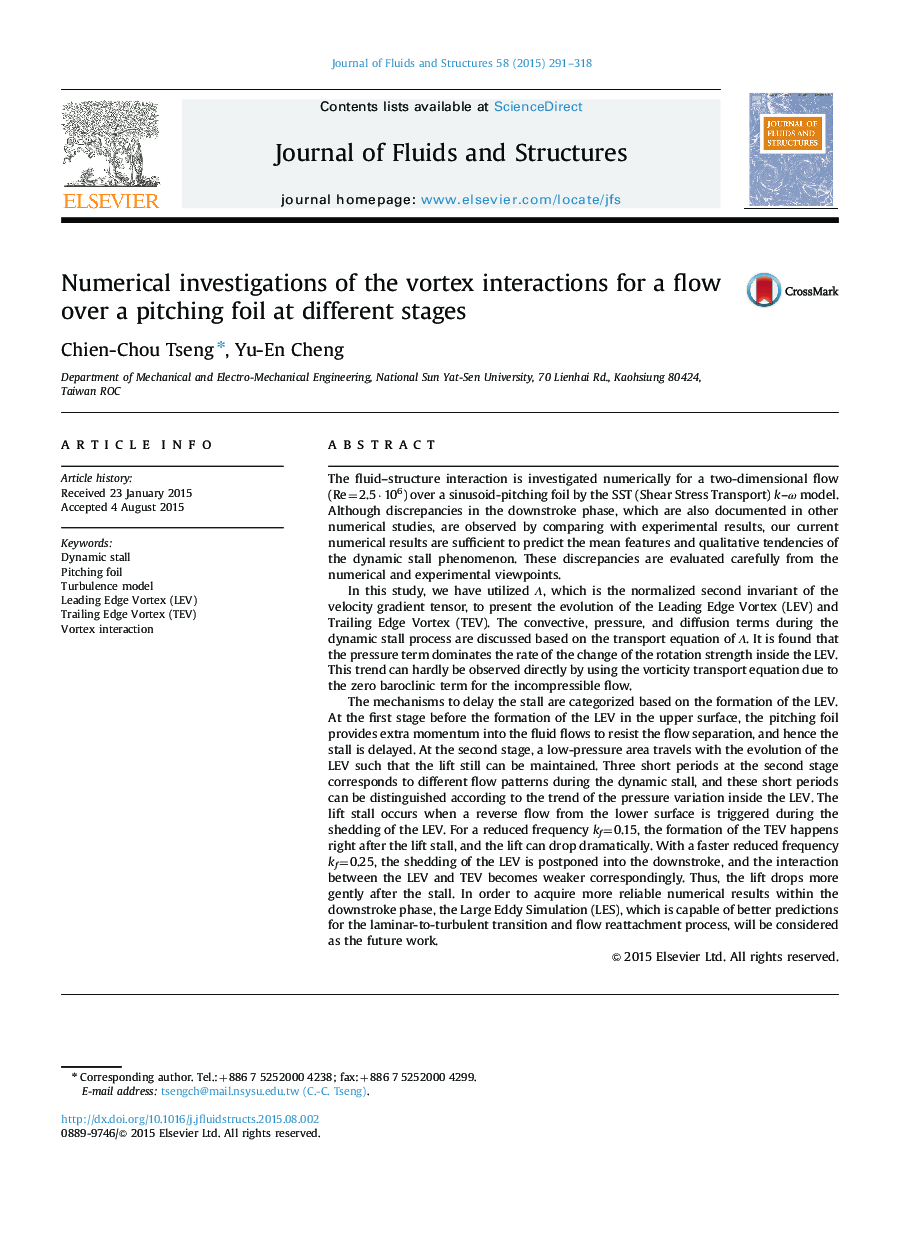| Article ID | Journal | Published Year | Pages | File Type |
|---|---|---|---|---|
| 7175939 | Journal of Fluids and Structures | 2015 | 28 Pages |
Abstract
The mechanisms to delay the stall are categorized based on the formation of the LEV. At the first stage before the formation of the LEV in the upper surface, the pitching foil provides extra momentum into the fluid flows to resist the flow separation, and hence the stall is delayed. At the second stage, a low-pressure area travels with the evolution of the LEV such that the lift still can be maintained. Three short periods at the second stage corresponds to different flow patterns during the dynamic stall, and these short periods can be distinguished according to the trend of the pressure variation inside the LEV. The lift stall occurs when a reverse flow from the lower surface is triggered during the shedding of the LEV. For a reduced frequency kf=0.15, the formation of the TEV happens right after the lift stall, and the lift can drop dramatically. With a faster reduced frequency kf=0.25, the shedding of the LEV is postponed into the downstroke, and the interaction between the LEV and TEV becomes weaker correspondingly. Thus, the lift drops more gently after the stall. In order to acquire more reliable numerical results within the downstroke phase, the Large Eddy Simulation (LES), which is capable of better predictions for the laminar-to-turbulent transition and flow reattachment process, will be considered as the future work.
Related Topics
Physical Sciences and Engineering
Engineering
Mechanical Engineering
Authors
Chien-Chou Tseng, Yu-En Cheng,
